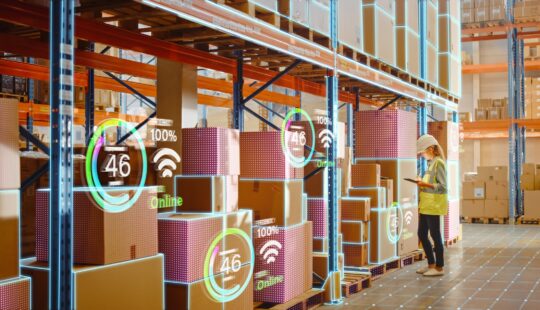For eight years, Gary Erickson has led a team in Channel Digital Enablement within the Global Partner Organization at SAP. Focusing on the digital aspects for partner enablement, he and his Learning Content, Training, and Platform team provide a best-in-class enablement experience to the SAP partner ecosystem.
With more than 35 years in the industry, Erickson has a wealth of experience. In this interview, he reflects on virtual learning and how learning is evolving, providing insight into the technology that is going to revolutionize learning.
Q: Tell us a bit more about yourself. What do you do when you are not leading Channel Digital Enablement at SAP?
A: Together with my wife, I currently reside in Calgary, Canada, near the Rocky Mountains on the west side of the country. We live close to an area perfect for hiking, back-country camping, and many other outdoor activities, so that keeps us occupied on weekends. Wildlife is abundant there, and we see everything from mountain sheep, goats, and moose, to grizzly and black bears. We can’t hike too far from home without a can of bear spray handy!
How did your career start? When did you join SAP?
My career started back in the late 80s at a data communications company. The 1988 Winter Olympics were awarded to Calgary, and I was fortunate to join the team, linking timing systems to results systems for TV feeds.
Once the games ended, I worked for several companies, such as Apollo Computer, Hewlett-Packard, EMC, and a startup, where I held numerous sales, channel management, and executive roles. In 2003 SAP recruited me to setup the SAP Business One and SAP Business All-in-One channel for the region. I’ve held various positions at SAP before moving into my current role as global vice president of Channel Digital Enablement within the Global Partner Organization eight years ago.
Can you explain Channel Digital Enablement and what you do in your current role?
Within the area of Partner Digital Learning and Enablement, my team’s mission is to provide the right platform, processes, content, and tools for all partner types and roles, for all products and solutions. We want to improve our partners’ skills and knowledge on SAP products and solutions, through a virtual approach whenever possible. The COVID-19 pandemic made virtual learning more relevant than ever.
What does your team focus on to provide a best-in-class enablement experience to our partners?
They really are an amazing team! They concentrate on alignment with numerous content providers across lines of business and communities, leveraging the most up-to-date and relevant materials, which are re-packaged for the partner audience and published on SAPPartnerEdge.com and SAP Learning Hub. Within SAP Learning Hub, we provide the SAP PartnerEdge Edition of SAP Learning Hub, a free program that is accessible for all partner individuals for Learning Journeys and SAP Learning Rooms.
We also focused our attention on helping our content stakeholders with virtual instructor-led or virtual packaging of the materials, taking the traditional classroom model with an in-person instructor and replacing it with a virtual expert, which allows them to expand and scale their teaching.
We aligned with openSAP, the platform from SAP Knowledge and Education for partner-supported massive open online courses (MOOCs). This has been really effective, driving huge interest from our ecosystem and the general public. This platform grants greater reach and availability for us to showcase our products and allows individuals to really come into the ecosystem in a much easier way. Best of all, the content is free.
How is learning different today from what it used to be 10 or 20 years ago?
Looking back, anybody who was trying to learn had to either read a book or attend classroom training. There has been a huge shift in technology, which changed the paradigm of how enablement is delivered today.
The move to virtual happened quickly over the last few years, and, today, people are looking to learn as part of their daily roles. A quick example of how learning today has changed would be the widespread use of tools like Google or YouTube. Enablement has changed dramatically from that perspective. Micro-learning has become the new norm. People want to consume three- to five-minute learning elements at any time.
Another aspect of this is testing knowledge or competency levels. The big transition we have seen is, instead of having a formal exam, taking micro-tests after each element is consumed.
Within our team, we have been simplifying and transitioning materials to virtual platforms. We are building prescriptive Learning Journeys and providing predefined learning paths with outcome-based guidance to help SAP partners easily find, consume, and understand the content.
Could you describe Learning Journeys and outcome-based guidance?
Learning Journeys are structured training maps that contain various learning elements and knowledge tests across various maturity levels, to help take an individual from a “school smart” to a “street smart” level of competency in a specific role for a specific solution.
Learning Journeys that are non-technical, such as sales, presales, marketing, customer engagement, or industry materials, are accessed via the SAP PartnerEdge Edition of SAP Learning Hub. For the consultant or technical implementation roles, subscription-based training editions are offered on a yearly basis. Learning journeys are not static – we continue to evolve and update them. We also offer coaching service elements to help partners get practical experience.
Outcome-based guidances are pre-defined sets of road maps for onboarding to help partner decision-makers. We want to help them find enablement content for sales, marketing, and delivery. These pre-defined learning paths make it easier to locate programs and Learning Journeys and allow partners to effectively identify the enablement needs for their teams’ individual roles and the required investment into learning.
Certification is a term that we hear a lot at SAP. What does this mean? And how does badging relate to it?
The term certification can be somewhat confusing because every company seems to use it in a different manner. At SAP, we use the term certification predominantly for technical roles, where we conduct a knowledge test that has a proctored exam. For other role-based training, we usually classify training as a qualification, which may lead to an authorization based on what the activity might include.
When we deliver certifications for technical roles, we also provide open badges for those certifications. We want to provide the learner with more than just a piece of paper confirming a passed exam. Open badges are validated and sent via a third party directly to the individual, which can then be shared on social media sites like Facebook or LinkedIn.
As our portfolio moved to cloud solutions, we also introduced the concept of “stay current” terminology to retain a certification status, providing frequent enablement training on the latest functionality changes.
People say that digital enablement is not as effective as in-class learning. What is your view?
Undoubtedly, everyone learns in a different way. Some learn better with hands-on training or with high-touch interaction. Others prefer to consume content virtually, whenever time allows. However, the benefits of digital learning far outweigh a large portion of the classroom-style teaching.
The most obvious advantage is, of course, cost savings. Instead of spending $3,000 for a five-day classroom training, along with travel expenses, you spend a fraction of that by taking the training online. And, for many trainings there’s no cost at all! With virtual instructor-led training you still get the engagement through breakout rooms, whiteboards, polling, chat, video conferencing, live access for hands-on labs, and more. You can also scale the subject matter experts more effectively to provide coverage to a global audience versus a small group.
Where is enablement headed in the future?
We are going through a dramatic shift in terms of how learning content is presented to users. At this point in time, we are using learning management solutions, which are consolidated content repositories that users must search through to find what training they want.
In the near future, companies are looking toward a next level of learning experience. Virtual reality (VR) and augmented reality (AR) will play a major role in learning. Artifical intelligence (AI) engines will determine exactly what kind of training you have already consumed and automatically recommend new opportunities for you to consider. There will be improved analytics and more blended learning with video micro-learnings.
With all these revolutionary technology elements, digital enablement is going to be very exciting. Perhaps learning from an avatar in the future is going to be no different than sitting in a classroom. There might even be a hologram on your desktop as a virtual instructor.
At SAP, we are driving learning topics in various forms, and these will integrate together under a new learning experience platform. It will be an exciting endeavor for SAP, partners, and customers. We will soon be releasing new search functionality for SAP Learning Hub, and we will modify Learning Journeys to add more personalization – a part of a phased approach to continue improving the user experience.
What is your call-to-action for SAP partners?
We want partners to take advantage of a variety of great enablement content and assets that are available free of charge. The easiest way to access this material is to register on SAPPartnerEdge.com and personalize their interests to ensure they receive the relevant newsletter information.
By logging onto our one-stop shop, SAPPartnerEdge.com, they will be automatically authenticated to access the SAP PartnerEdge Edition of SAP Learning Hub, which contains our solution SAP Learning Rooms and the role-based Learning Journeys. Free, online workshops and webinars can be found in the events calendars of SAP Learning Rooms or through the partner enablement calendar on SAPPartnerEdge.com.
On top of that, twice a year, we conduct a fully digital, 24-hour virtual SAP Innovation Day for partners, where SAP executives from across the partner organization outline SAP’s vision, strategy, and partner-specific opportunities. A virtual event not to miss!



